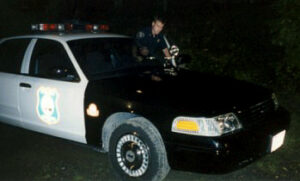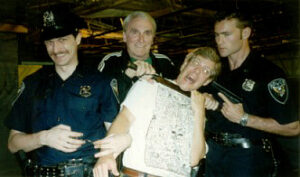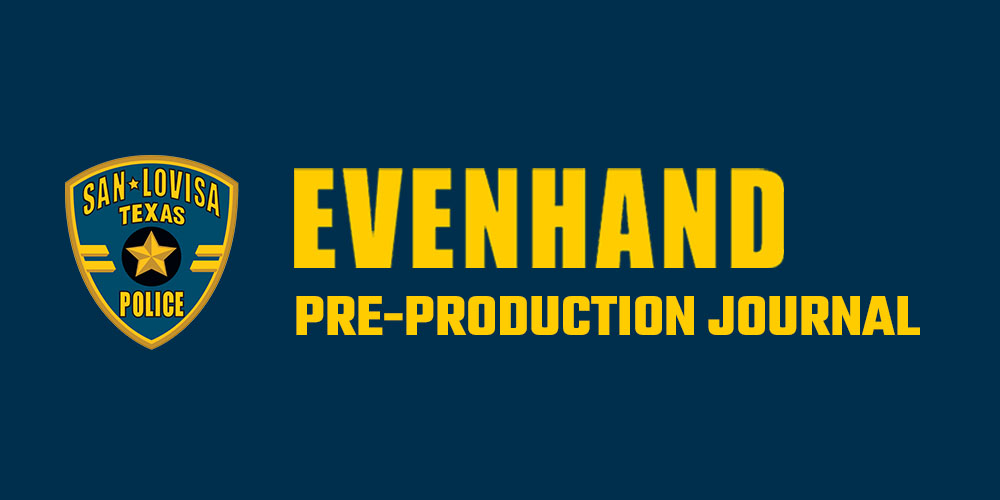My goal was for EvenHand to be in production by October/November, but that was a bit overly ambitious. We have two Cherry screenings and two festivals to attend in the next couple of months (not to mention the Millennium). Our current, more realistic schedule calls for pre-production to begin in late November for production in mid-January. This will be preceded by a scout to Texas to visit the three or four most likely cities for our location shoot.
The most interesting EvenHand news is that we shot four scenes last week in upstate New York. The sequence was about ten pages from the middle of the script — a great series of scenes in which Francis and Morning respond to a call for a man with a gun. The man, Winston, turns out to be a retired cop who is going a bit nutty. His adult children have finally convinced their mother that it’s time for him to go into a home or hospital, but he has become increasingly irrational and they reluctantly call the cops to help get him out of the house (the script pages were recently posted on this site, but removed at the request of the screenwriter).

Morning adjusts his spotlight
We shot the Winston scenes on digital video, a first for me. We are thinking about filming the entire script on digital and consider this a test of the medium. The primary purpose of this little shoot, though, was to have a promotional short to help raise additional funds and attract interest from talent.
After two days of filming with a crew of four and a cast of five, I have to say that I am a big fan of digital. We shot ten pages in twelve hours (14 camera set-ups spread over two days), which would be impossible on a 35mm shoot — there are too many people on set and too much stuff in the way to work that fast. On our best Cherry days we managed 3 1/2 or 4 pages a day. When you can move one light a little and do your next set-up within five minutes of the last, the day goes a great deal faster. And, most importantly, your actors don’t lose the emotional intensity or forget the blocking. Even the ability to view the dailies the next morning (hook the camera up to the prop TV and hit “play”) made it possible to recognize that we were missing a shot and get the shot at the beginning of the next day without a huge hassle.
Tape stock is incredibly cheap, too (unlike film) — and there’s no lab processing. This means that you can shoot the rehearsals, allowing for the spontaneity that you sometimes get on the first take.
Now, I haven’t yet edited the material into a series of scenes, so the process isn’t entirely completed, but I have seen the footage and it looks good, and I have enough experience in the editing room to know that it will cut together pretty well.
The shoot itself was different in character from anything I have experienced on a 35mm film set. There were only twelve of us, including Sgt. Shetsky, who stayed with the police cruiser that the Hudson NY Police Department kindly lent us. We all ate dinner together, sitting around one table, instead of the six tables typical of a meal on a film set. This meant that there was no director’s table, no grip table, no actor table, no prop dept. table; there was no sense of hierarchy or status. One of the actors and an intern cooked dinner; the Sergeant and I cleaned up.
After fifteen years working exclusively on 35mm film, I am ready for the digital revolution.

Francis, Winston & Morning manhandle the director
– Joseph Pierson



